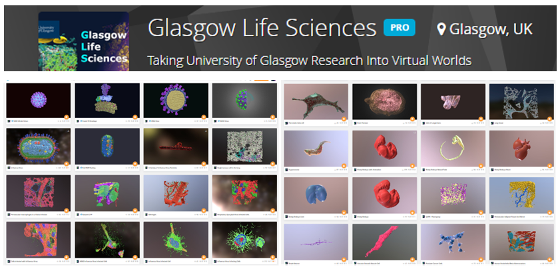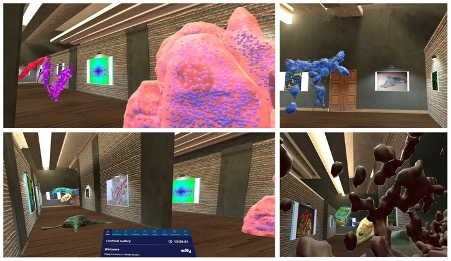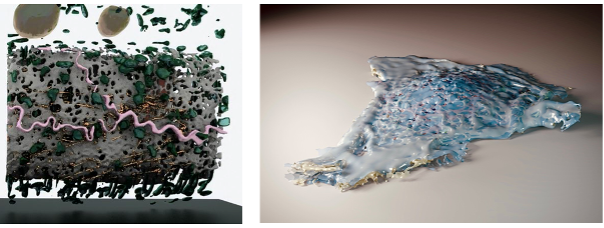XR Life Science
XR Life Sciences is a project housed in The School of Cardiovascular & Metabolic Health that has strong links to ARC XR and builds 3D models, animations and VR scenes using data derived from laser scanning microscopes. Funded by MVLS/BBSRC Engagement & Proximity to Discovery Awards (£30k), this project involves the curation of 3D data to build a publicly accessible data archive. The project is led by Prof. Craig Daly, with previous contributions from Annabel Slater. The project continues to grow and is now run solely by Prof. Daly.
Objectives of the project
The XR Life Sciences project (previously Glasgow Life Sciences) was created out of the recognition that within MVLS there was a potentially very large archive of 3D data that was unused or finished with and not curated. These data come from laser scanning microscopes and other 3D imaging devices. Users/Researchers will typically collect far more data than is used and often a 3D dataset may be rejected because it does not contain every feature the researcher was looking for. However, the data could be repurposed for other research, teaching or public engagement. The XR Life Sciences project aims to repurpose unused (or new) data to take University of Glasgow research into virtual worlds.
The funding enabled the team to contact multiple research groups in MVLS to ask if they would contribute 3D data sets of biological samples that could be brought together as a data archive. Prof. Daly would process the 3D models and mount them within a suitable, publicly available, database. There are currently 53 models available for viewing and/or download on Sketchfab, the chosen platform to showcase the project. The XR Life Science project promotes imaging-based research, makes accurate 3D models, VR scenes and 3D prints from confocal or medical image data. The collection continues to grow and can be accessed at the Glasgow Life Sciences (@GLS) Sketchfab.
The impact
The XR Life Sciences project and publicly available 3D data collection are one of a kind. At the beginning of 2019 there were very few (if any) useful 3D models for Life Science related research and teaching. Collaboration is at the heart of the project with researchers collecting the data and XR Life Science creating the VR/AR content.
There is untapped potential for the project to progress and the opportunities to curate further 3D models are endless. Prof. Daly says, “We believe we have only scratched the surface with this project and that there is a rich seam of 3D data that has yet to be mined both locally and externally”.
More recently the XR Life Science service has developed interactive games, photorealistic rendering and is currently leveraging the power of Machine Learning to speed the workflow for creating 3D models.
XR Life Science – Bringing YOUR Science to Life; https://www.xrlifescience.com/

VR Data Gallery Comprising GLS models

Photorealistic renderings of two GLS datasets

Find out more:

